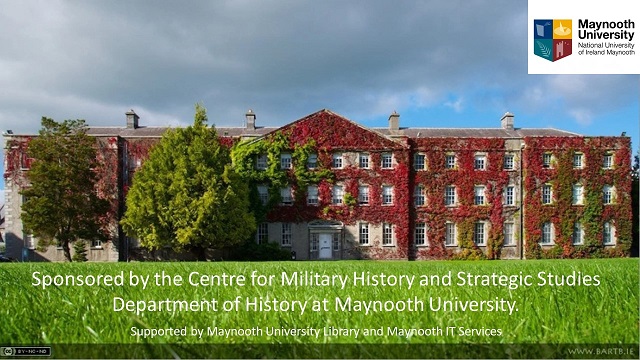David Murphy reviews "The Irish Defence Forces, 1922-2022". By Eoin Kinsella. Dublin: Four Courts Press, 2023.
The Irish Defence Forces, 1922-2022. By Eoin Kinsella. Dublin: Four Courts Press, 2023. Pp 360, including full colour illustrations; €30; ISBN: 978-1-80151-036-3.
This book was published to mark the centenary of the foundation of the Irish Defence Forces and such a history was long overdue. Reviewing the volume of the chief of staff’s reports in 2011 (edited by Micheal Kennedy and Victory Laing) I made the point that a multi-volume official history series, based on official documents, was badly needed - a larger series that would chart the history of the Irish Volunteers, the National Army and the Irish Defence Forces.[1] Indeed, in the wider EU context, Ireland is the only country that has not commissioned an official history series of its defence forces. This volume, therefore, marks a key step in the right direction and it can only be hoped that it will help generate further publications, based on the same format. As an overview of a century of military service and development, this is a commendable volume and there is scope for further volumes focusing on the history the Emergency period, Irish deployments on UN operations, and also separate volumes on the Air Corps and the Naval Service.
For serving and former members of the Defence Forces, and anyone interested in Irish military history in general, this book is highly recommended. It charts the history of the men and women of the Defence Forces from its earliest days and discusses the formation of the first army in the difficult years after the Irish Civil War. It also charts the rapid expansion of the forces during the Emergency period and the impact of the Troubles on the organisation and operations on the island. Many members of the Irish public have only very limited knowledge of the role and activities of the Defence Forces and, where they do have such an awareness, it often focuses on the Irish role in the United Nations. Since joining the UN in 1955, the Defence Forces have played a prominent role in peacekeeping operations in the Congo, Cyprus, Lebanon and on many other deployments missions. This volume underscores the professionalism and dedication shown by Irish service men and women on these missions while the inherent dangers of these operations are discussed in the context of Irish casualties on UN service.
There are some reoccurring themes in this volume and it is somewhat unsettling to note that periods of heightened international tension and threat have traditionally coincided with periods in which the Irish Defence Forces have been small in terms of numbers, while also lacking the capacity to defend the island. Throughout the century of its history, the Defence Forces have consistently been under-resourced and have often had to operate without clear political backing and leadership. In the late 1930s, as the world descended into WW2, the Irish army was tiny and without the necessary capabilities to defend the island. Over eighty years on, in the worst phase of international conflict and tensions since WW2, we find ourselves in much the same situation. By EU standards, Ireland’s Defence Forces are tiny and once again do not have the basic capabilities to defend the island, its airspace or its maritime space. The lack of a dedicated minister for defence and the associated defence Eco structure has played a part in this and the reports of recent commissions, review bodies and the associated media coverage have pointed to these issues and the problematic internal culture. These elements are introduced in this volume and could perhaps been discussed more fully. Hopefully, this history of the Irish Defence Forces may play a role in developing the conversation further and increasing public awareness of defence and security issues on the island.
This is a beautifully produced volume with lavish illustrations, including colour images, throughout. There are ample appendices and the information on UN missions shows the extent of the commitment of Irish service men and women to international peacekeeping missions. In that sense, it can be seen that Ireland consistently punches above its weight in international terms and the personnel of the Irish Defence Forces have been in the vanguard of these efforts. This is a fitting tribute to their service at home and abroad, and hopefully this volume will renew interest in this aspect of Ireland’s history.
Dr David Murphy
Maynooth University
[1] Micheal Kennedy and Victor Laing (eds), The Irish Defence Forces, 1940-1949: the Chief of Staff’s reports (Irish Manuscripts Commission, Dublin, 2011).

 This work is licensed under a
This work is licensed under a 
